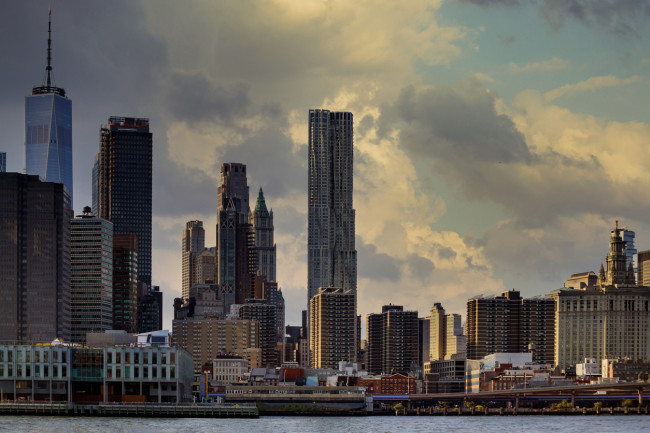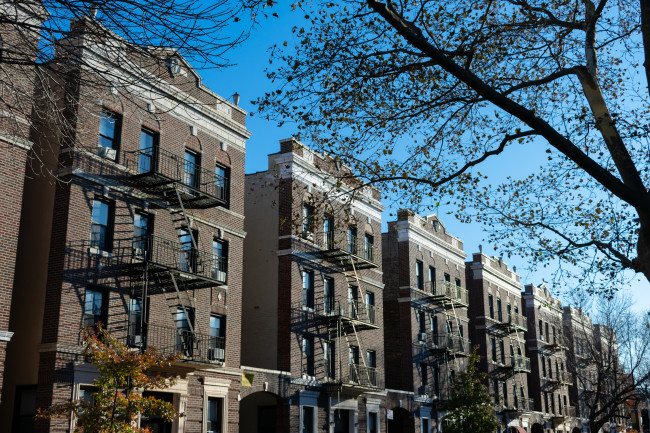Landlords pull renters back to NYC with low rents and concessions

New leases in Manhattan hit the highest October total in 12 years, rising 33.2 percent over October 2019, according to the most recent Elliman Report.
iStock
Renters returned to Manhattan and Brooklyn in October—in a big way. Months of falling rents and rising concessions—spurred by a record rising vacancy rate—finally encouraged New Yorkers to sign new leases—and not by small margins either.
New leases in Manhattan hit the highest October total in 12 years, rising 33.2 percent over October 2019, according to the most recent Elliman Report for Manhattan, Brooklyn, and Queens rental markets. “It’s the highest October total since the Financial Crisis,” says Jonathan Miller, president and CEO of appraisal firm Miller Samuel and author of the report.
“It’s a thing,” he says, meaning the report's findings are notable but he warns against getting carried away. “It’s just one month, so it’s premature to call it a trend,” he says.
But it is an encouraging trajectory. Manhattan leasing activity had not seen any gains for the previous 14 months and just started to perk up in September, hitting the same level as September 2019. This compares to a year-over-year decline of 23.7 percent for August and a drop of 23.4 percent in July.
What’s interesting is that landlords appear to have reached the threshold that pulls people back into the city through a combination of low rent and major concessions.
Manhattan median rent for October, $2,868, was a 15.9 percent decline from October 2019. Close to a third of Manhattan leases in October came with a concession (60.4 percent) and the average amount of the concession, was 2.1 months—both metrics were new records.
In addition, Manhattan net effective rent, $2,868, fell to its lowest level in 9.5 years and the year-over-year decline in net effective median rent for studios, one bedrooms and two bedrooms was the largest on record.
The problem for renters, however, is that concessions go away after one year, so renters can expect to pay the gross rent the second year—or even see their rent go up based on the gross rent.
But on the other hand, a year from now seems very far away—and lots may change, Miller points out. There could be an effective vaccine and New York City could bounce back—along with high rents.
Miller says landlords are in a tough position right now, and that’s the focus: The vacancy rate in Manhattan hit an unheard level of 6.14 percent in October. “Even with the uptick, there’s still softness ahead for landlords,” he says. Case in point: the number of rental listings on the Manhattan market jumped 218.4 percent—to 16,145 apartments. (Listings have been building up each month and lease signings have not kept pace.)
Brooklyn followed a similar pattern as Manhattan. New leases surged to the second highest October total in 12 years—jumping 20.9 percent over October 2019.
The median rent for Brooklyn, $2,920, was a drop of 2.5 percent from a year ago. More than half of all leases came with a concession (50.9 percent), which was a new record.
Brooklyn listings on the market also increased an eye-popping amount: 207 percent from October 2019—that’s a lot of competition for landlords.
Queens seems to march to a different beat—the borough did not see the uptick in leasing activity. October leases were down 37.8 percent over the prior year, making 15 consecutive months of declines.
Median rent was $2,414, a drop of 15.4 percent over October 2019, and net effective median rent fell at the largest rate in nearly four years of tracking. Listings on the market increased to the second-highest level in more than six years of tracking.
Other market reports
MNS released its rental market reports for Manhattan, Brooklyn, Queens, and the Bronx. The reports drill down to look at rents by apartment size and neighborhood—and compare doorman to non-doorman buildings in Manhattan. Findings include: The largest monthly decreases were seen for non-doorman two bedrooms on the Upper West Side, doorman two bedrooms on the Lower East Side, non-doorman studios in Soho, and doorman studios on the Upper East Side.
You Might Also Like



























